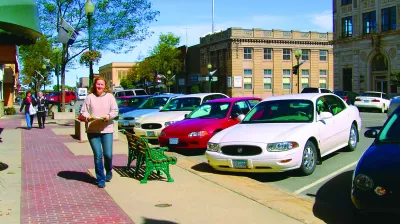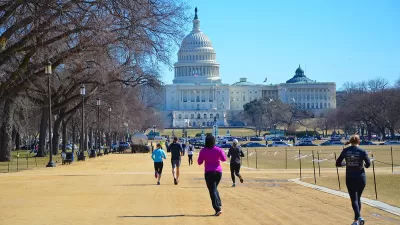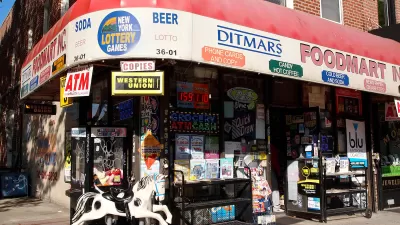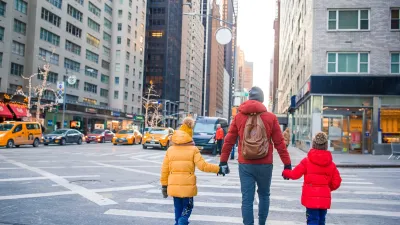Albert Lea, Minnesota proves that small towns can reinvent themselves—often faster than big cities—and that walkable communities aren't only possible in urban neighborhoods.

Jay Walljasper profiles Albert Lea, Minnesota, "a town of 18,000 where people are working to prove that healthy lifestyles like walking and good nutrition are not just big-city things."
Albert Lea is not a college town or a resort town. According to Ellen Keher, a local resident and former city councilmember quoted in the article, "we’re an ag-based rural city promoting healthy living because it’s the right thing to do and it’s how we want to live and want our children to live…"
The article details the town's efforts, which date back to 2009 when it "adopted a community-wide approach to wellness laid out in 'Blues Zones,' a best-selling book by National Geographic fellow Dan Buettner that examines places around the world where people live longest and healthiest."
The results of the efforts speak for themselves: walking has increased 70 percent in the last five years, smoking has dropped by 4 percent, and the community has lost a collective four tons of weight.
The article also details how the community achieved the outcomes, including organized walking groups, walkability improvements to downtown infrastructure, safe routes improvements near schools and senior centers, and a bikeway connecting a state park and the community's downtown.
FULL STORY: Albert Lea shows how walking and other healthy habits can rejuvenate a rural community

Study: Maui’s Plan to Convert Vacation Rentals to Long-Term Housing Could Cause Nearly $1 Billion Economic Loss
The plan would reduce visitor accommodation by 25,% resulting in 1,900 jobs lost.

North Texas Transit Leaders Tout Benefits of TOD for Growing Region
At a summit focused on transit-oriented development, policymakers discussed how North Texas’ expanded light rail system can serve as a tool for economic growth.

Why Should We Subsidize Public Transportation?
Many public transit agencies face financial stress due to rising costs, declining fare revenue, and declining subsidies. Transit advocates must provide a strong business case for increasing public transit funding.

How to Make US Trains Faster
Changes to boarding platforms and a switch to electric trains could improve U.S. passenger rail service without the added cost of high-speed rail.

Columbia’s Revitalized ‘Loop’ Is a Hub for Local Entrepreneurs
A focus on small businesses is helping a commercial corridor in Columbia, Missouri thrive.

Invasive Insect Threatens Minnesota’s Ash Forests
The Emerald Ash Borer is a rapidly spreading invasive pest threatening Minnesota’s ash trees, and homeowners are encouraged to plant diverse replacement species, avoid moving ash firewood, and monitor for signs of infestation.
Urban Design for Planners 1: Software Tools
This six-course series explores essential urban design concepts using open source software and equips planners with the tools they need to participate fully in the urban design process.
Planning for Universal Design
Learn the tools for implementing Universal Design in planning regulations.
Ascent Environmental
Borough of Carlisle
Institute for Housing and Urban Development Studies (IHS)
City of Grandview
Harvard GSD Executive Education
Toledo-Lucas County Plan Commissions
Salt Lake City
NYU Wagner Graduate School of Public Service





























